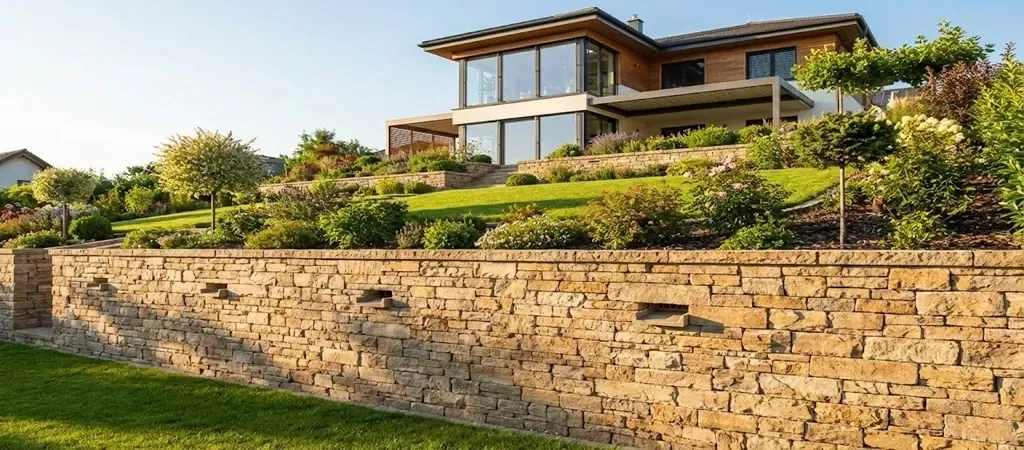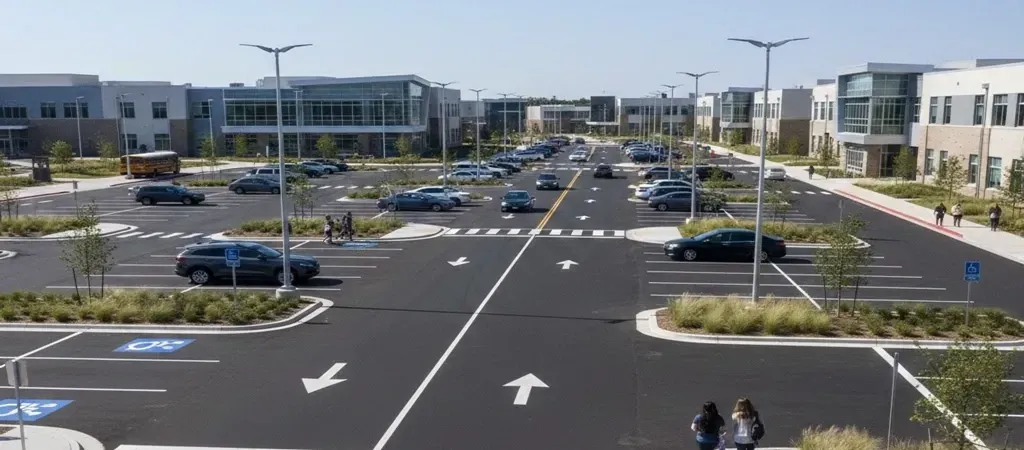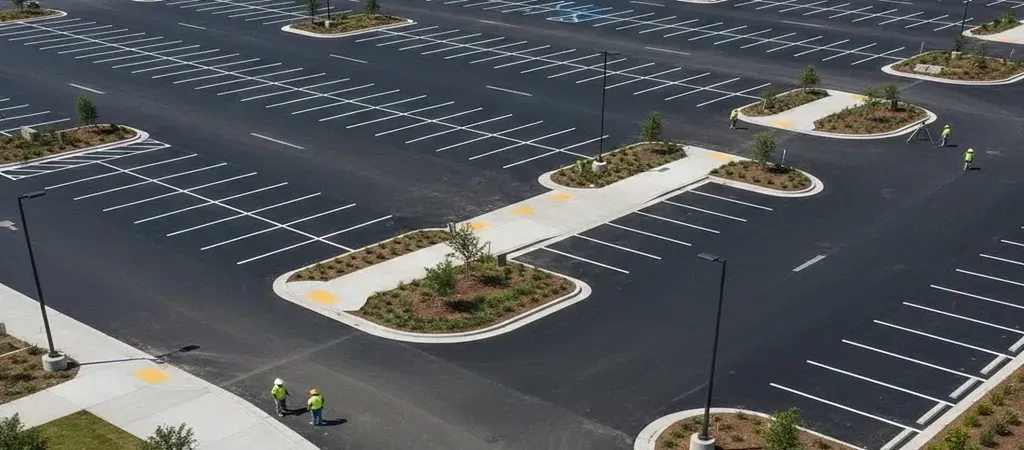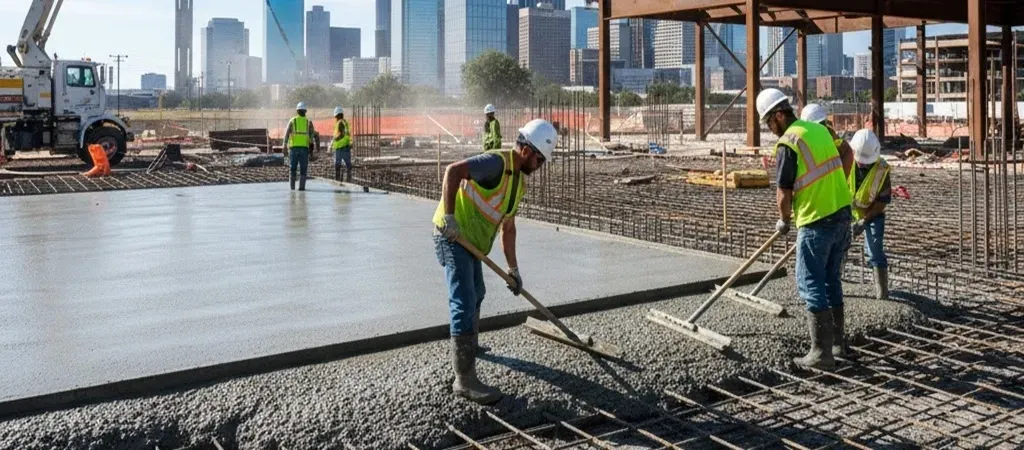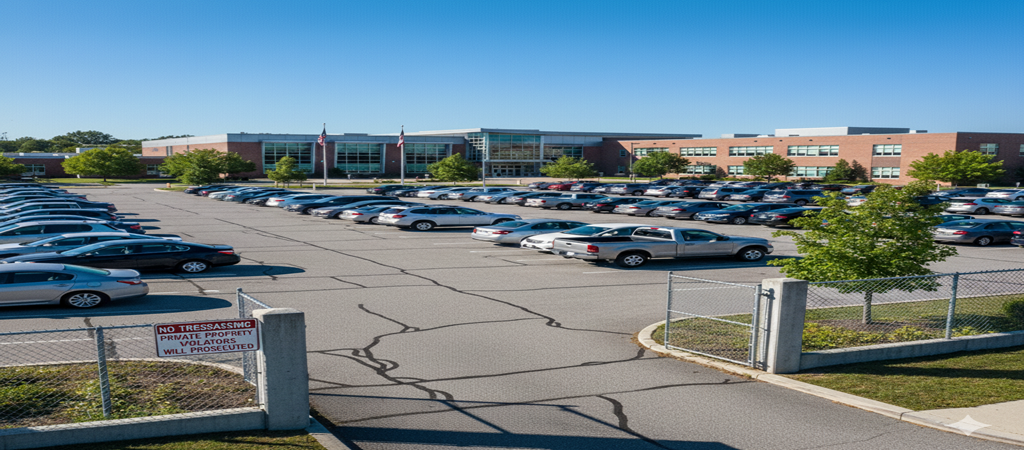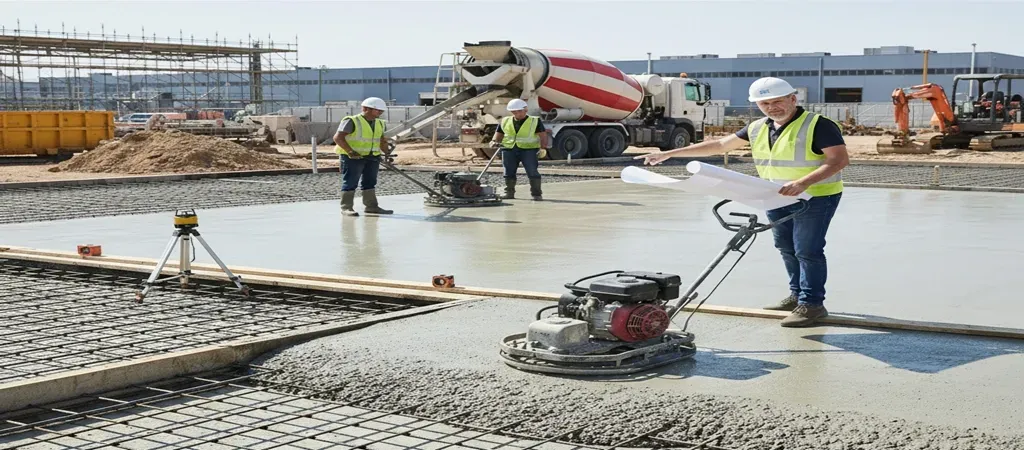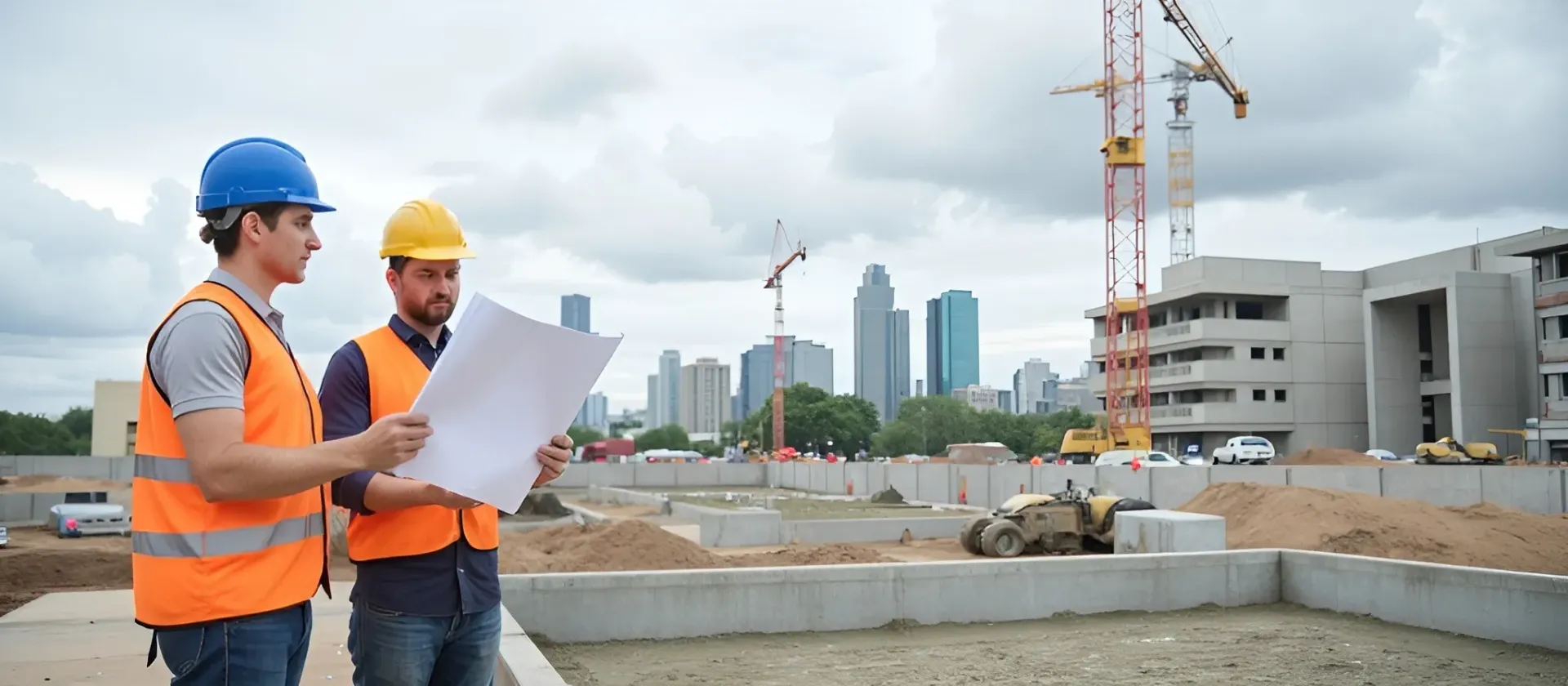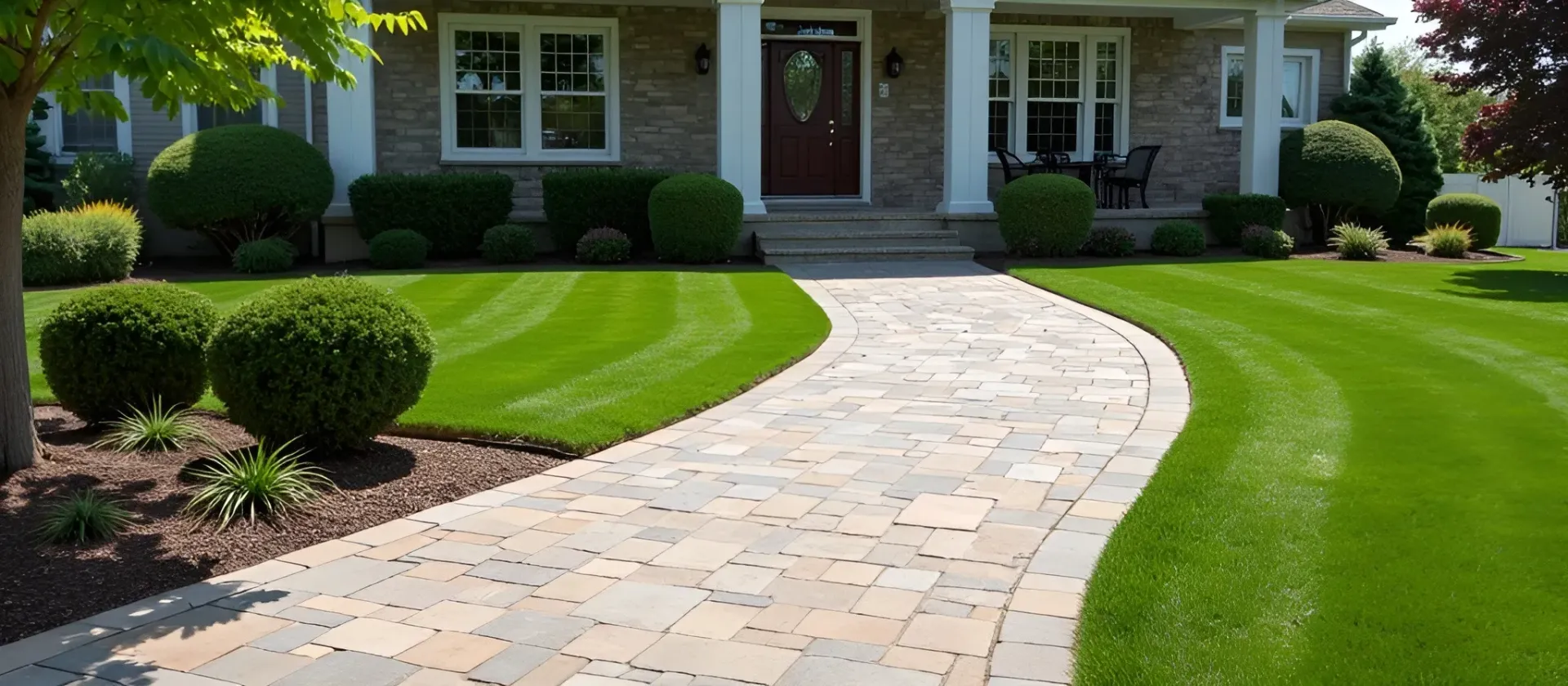Planning Your Concrete Project in Dallas: A Step-by-Step Guide
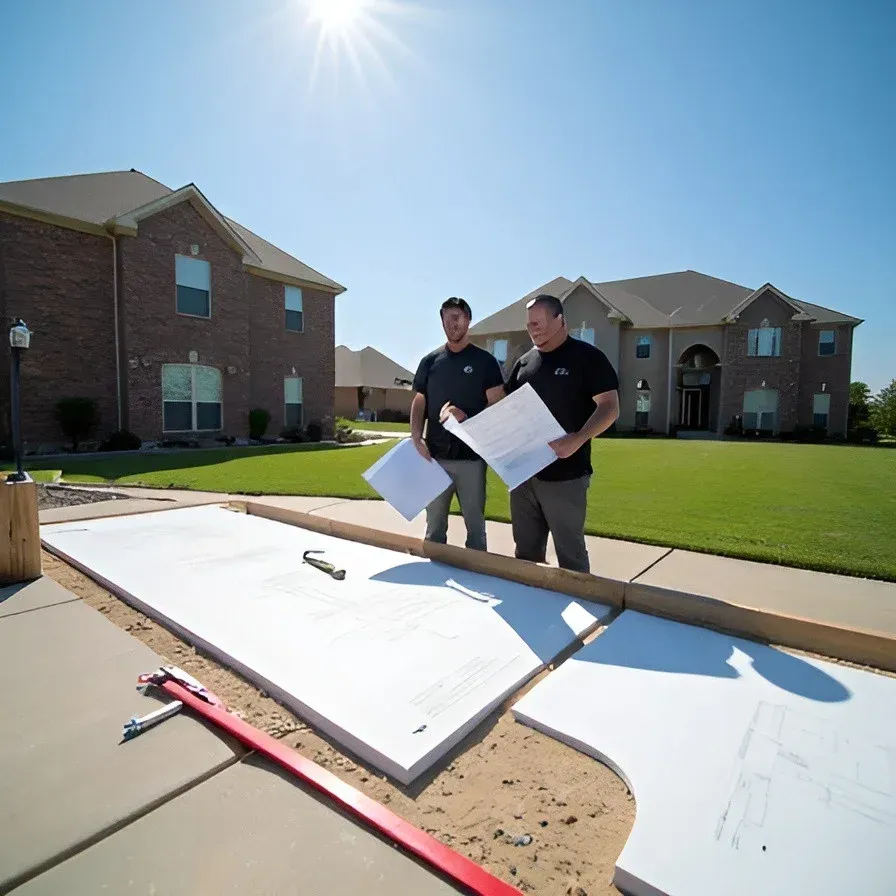
Thinking of starting a concrete project in Dallas? Not only is concrete a durable material, but it is also a popular product that boasts strength, longevity, and low maintenance. Working with concrete isn't easy, but the methodology isn’t as complicated as you’d expect either.
We’ve compiled the key steps you should expect to give you insight and a better understanding of what will happen at your construction site.
Site Preparation
When it comes to concrete installation the first step would be preparing the site. Think of it as creating a clean canvas to
start each project with.
Make sure that the area is clear of plantation, debris, and clutter, exposing only the earth. Assess the soil grade and stability, and if it is not compact enough, fill it in with a compressed sub-base of gravel.
Formworks
After the sub-base is prepared and ready, the concrete forms can now be set.
Formworks, also called concrete forms, are the temporary molds that secure your wet concrete together and help keep it shaped until the concrete is strong enough to hold on its own.
The type of concrete form you use will depend on the needs of your project. An example would be a simple temporary wood formwork being best suited for molding cemented paths and driveways. But if you’re building a foundation or a bigger concrete structure, you’ll have to use a more sophisticated formwork like a permanent insulated concrete form.
Mixing the concrete
There are many ways to mix concrete on site, but we’ve narrowed it down to 2 most common: hand mixing and machine mixing.
As the words say, hand mixing is the most basic method, manually mixing the cement, water, and aggregate in a large container (most often in a wheelbarrow) using a shovel or hoe. This technique is popularly used by smaller contractors or anyone working on DIY projects and repairs.
Machine mixing on the other hand makes use of the concrete mixing vehicle to do all the heavy-duty blending, this makes the mixture get done faster with better consistency. And because this method would end up pricier because of the specialization and use of the equipment, this method is commonly used for bigger projects.
Pouring/Placement
It’s time to pour your concrete mix!
Pay attention to the first and last designated concrete pouring times. Usually, the initial setting time would be around 45-60 minutes, but it can be modifiable by adding in admixtures. If the time isn’t checked properly, many troublesome things can pop up, one of them being cold joints.
A cold joint is a weak concrete surface formed from the interruption of the pouring, which can be caused by unexpected factors. This occurs when the interval time is longer than the initial setting time of concrete but shorter than the final setting time of concrete. Therefore to avoid this, a new layer of concrete should be poured in a sequence or pattern before the existing layer finishes setting.
Other things to look out for when pouring your concrete mixture include using the right ratio, preventing pouring from free fall height to avoid segregation, and limiting the rise of temperature.
Pre-Finishing
Next up is leveling the surface of the concrete to make the edges look even. Screeding, as we call it, is the process of smoothing the top of freshly poured concrete to create a flat and uniform finish. This is usually done by dragging a straight-edged tool also known as a screed to remove excess material and fill in the low spots. It is an essential step in ensuring a uniform, level surface for floors, pavements, and other concrete structures.
Depending on the type of finish you want for your concrete, after screeding and once the concrete has set adequately, a trowel can be used to further smooth and compact the surface. This process can be done by hand (hand trowelling) or with a power trowel (machine trowelling).
If you were wondering how beneficial it is to add troweling to your pre-finishing steps, well here are just some of the benefits it can do for your concrete.
Secures its durability and effectiveness
Reduces the chances of cracks
Gives it a higher resistance to water seepage
Helps get rid of surface imperfections like air voids
Creates a low-maintenance top layer
Final Finishing
Once all the
troweling is done and the concrete has been set to the point where it can support its weight, we can move on to add the finishing touches. Finishing includes shaping and refining the concrete surface to get the appearance and texture you want.
There are a variety of finishes to choose from, the most basic being the “broom finish” where a steel broom is dragged across the surface to create a rough and textured top. Other types include stamped, and textured, and you can even add in epoxy floor coating for anti-slip and extra aesthetic appeal.
Curing
Curing is one of the most critical actions to undertake once concreting is completed, playing a crucial role in the durability and strengthening of your concrete, which is why curing should never be brushed off. If we fail to cure the concrete properly, several major issues will arise.
Curing involves maintaining appropriate moisture and temperature levels in freshly poured concrete to help it achieve optimal strength and durability. This process can extend from several days to weeks (usually 7-28 days) influenced by factors like required strength, the specific concrete mix, and ambient conditions.
There are a lot of various curing techniques, from water curing to membrane curing, and using curing compounds. Water evaporating too quickly will lead to stressing and cracking causing the weakening of the finished product which is why the target goal is to keep the concrete soaked for the first 28 days.
Conclusion
Overall, completing the construction stage of a concrete project demands expertise, accuracy, and collaborative effort to fully implement the project and meet the design expectations. Having grasped the fundamental procedures for installing concrete, your next step is to select an expert contractor in Dallas to assist with planning and laying the groundwork. Effective management during this phase guarantees that the result is both practical and long-lasting, reflecting a good understanding between you and the contractor. Contact us now!
